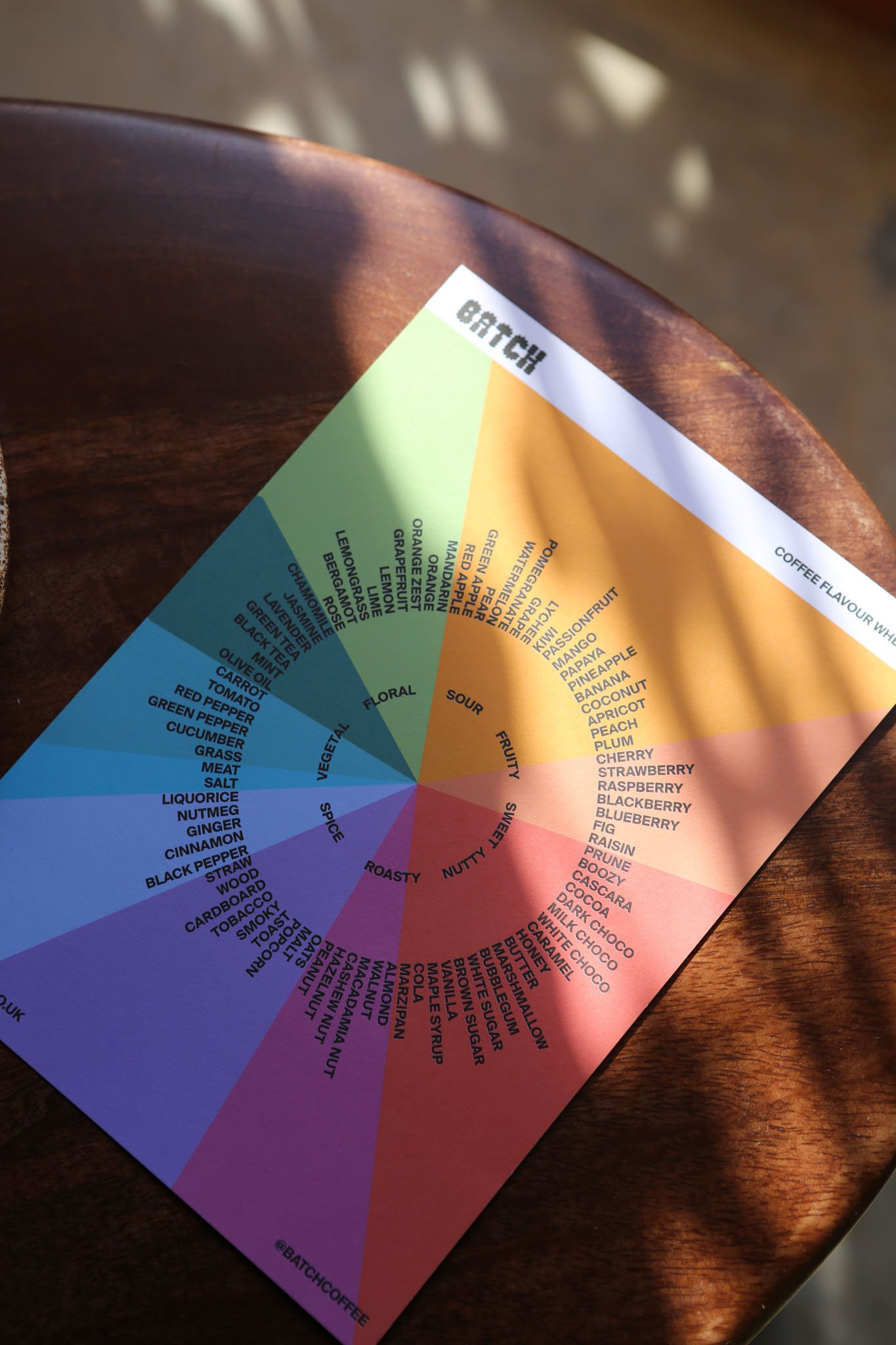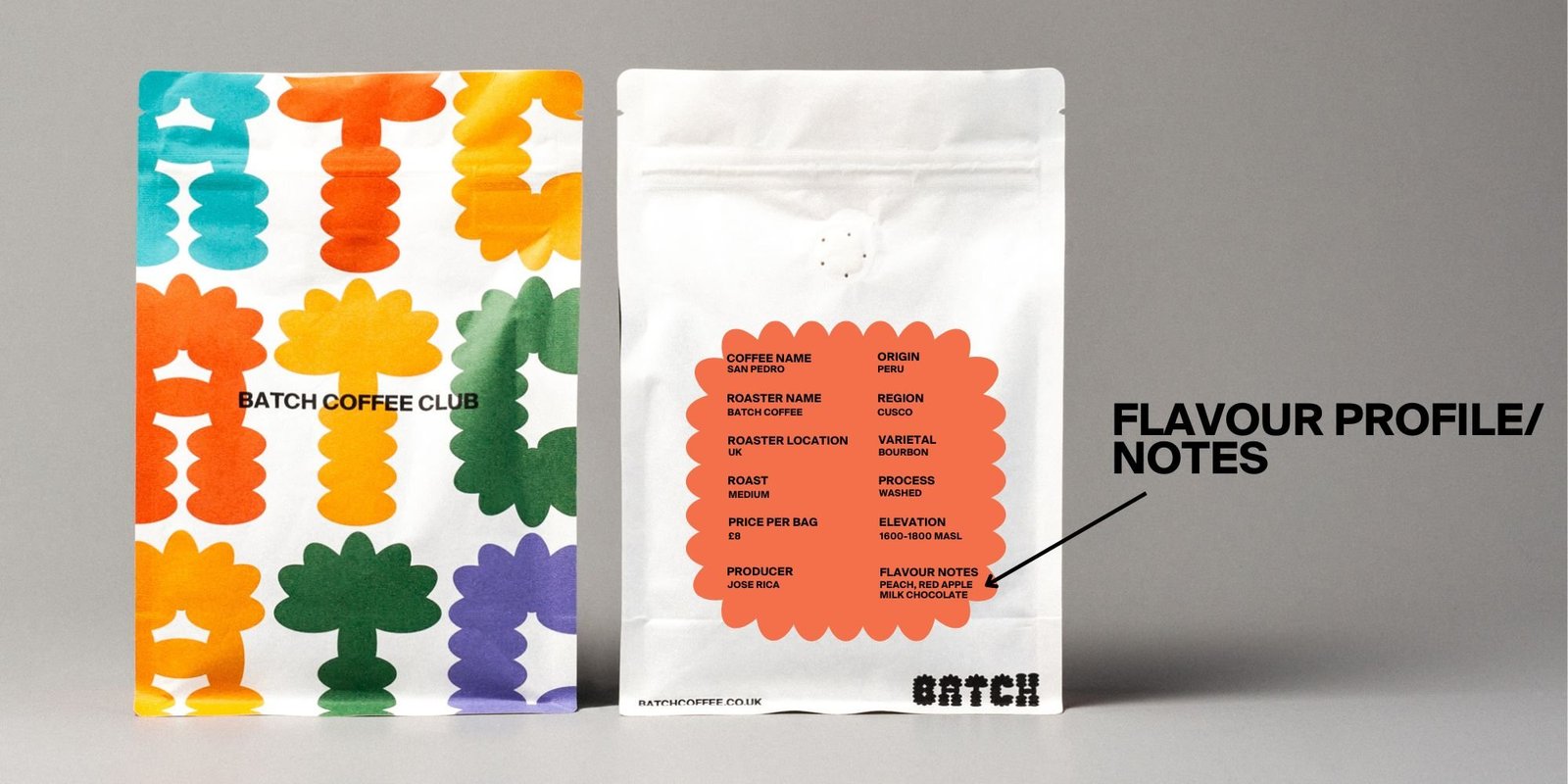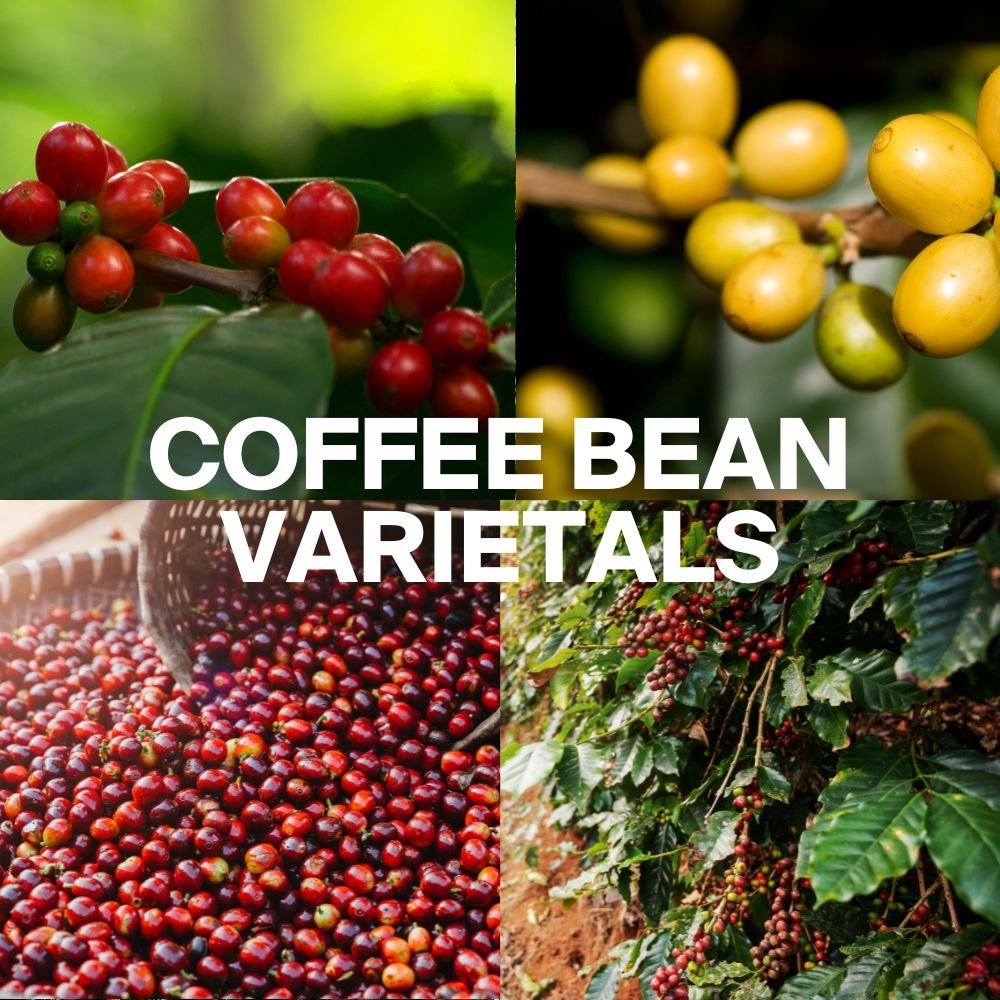The more I dive into coffee the more I find coffees that don’t taste like coffee at all. There are so many different flavours in specialty coffee, which is what makes it so special(ty).
You don’t have to have loads of tattoos and an edgy haircut to brew and experience the amazing flavour profiles that some coffee beans have.
Skip To:
.
But when you’ve just walked out of your favourite coffee shop and taken your first sip of the day’s Batch Brew you may be wondering why coffee beans have different flavours?
Fear not we have the answers.
Why Trust Me?
I’m Tom and I have been working in the coffee industry for over 10 years, starting my journey as a barista in Australia, working on coffee farms in South America and roasting coffee in The UK.
Today I review and write about speciality coffee. I am the founder of Batch Coffee Club, which showcases the very best coffee from around the world.
Related Content
What are the flavour profiles of coffee beans?
So straight off the bat, let’s just define what a flavour profile is and what flavours in coffee beans actually mean.
You may see, advertised on the back of a coffee bag the flavour profile of the coffee beans inside, say for example it reads: Peach, Red Apple and Milk Chocolate. This doesn’t mean that any of these flavours have been added to the coffee beans (or grounds) in any way.
They are purely reference points that the coffee roaster or the coffee buyer believes the flavours and other attributes of the profile are similar to.
It helps customers distinguish between different coffees and decide what sort of profiles they prefer. Of course you can still taste the flavour notes that are shown on the side of the bag (after a little practice coffee cupping) but they are also subjective to people’s tastes.
So you may actually taste Raisin, Caramel and Milk Chocolate when cupping the coffee beans mentioned above.
There are many different flavour notes in coffee – in fact there are more in coffee than in wine.
A coffee roaster will use a visual aid such as a flavour wheel to help her with distinguishing what she tasted in the cup.
Firstly she will work through a list of elements and figure out how much of each is present in that coffee these are:
Fragrance/Aroma
Flavour
Aftertaste
Balance
Cleanliness
Sweetness
Usually these are represented with a ranking and an overall coffee scoring system.
The coffee roaster may then choose to describe the coffee by likening the taste and mouthfeel to a number of flavours, these usually fall into the following categories:
Each category has a number of flavours associated with it that you may see on a bag of coffee, for example under the fruity category there may be specific notes of Raspberry, Blueberry, Peach, Orange or Lime.
What factors affect the flavours of coffee beans?
There are a number of different factors that affect the overall flavour of coffee beans. This is why each coffee is really unique as there are so many different variables that come into play.
Varietal of Coffee Beans
Firstly the varietal and type of coffee has a huge impact on the end flavour profile.
For instance Robusta and Arabica coffee beans have very different flavour profiles as they are different types of coffee plant. The flavour profile of robusta is much harsher than the complexities of Arabica coffee.
The varietal is essentially the different names given within each type of coffee plant. For example there are many varietals of Arabica coffee such as Bourbon, Typica or Caturra.
Each varietal has a unique flavour profile.
The Origin
The origin and the region of the coffee farm can also have a huge impact on the overall flavour profile. For instance a particular region of a particular Origin may have volcanic soil with a unique terroir that will add to the complexities of a coffee’s flavour profile.
One such region is Yirgacheffe in Ethiopia which is known for some complex fruit forward coffees that have really unique flavour profiles.
The altitude of the coffee farm
Altitude has an impact on the chemical composition of coffee beans.
The higher the coffee plants grow the less oxygen is available.
The coffee plant has to work harder to produce the fruit and more sugars are usually present in the green coffee which has a significant affect on the flavour profile.
The Coffee processing method
The coffee processing method plays an important step in the flavour profile of coffee.
There are two main ways that it is processed, washed or natural coffee beans (although there are many variations of these two techniques today).
Once the coffee is harvested the coffee cherries are usually either washed (all of the fruit and mucilage stripped off the coffee seeds before drying) or naturally processed (the coffee is dried with the cherry intact before later removing the dried fruit). Washed coffees typically have a cleaner flavour profile but can have an array of flavours from dark chocolate through to lemon. Naturally tend to be a little more on the fruity side occasionally with fermented flavours.
Type of roast
Roast type is another step on the flavour profile journey. The levels of roasting coffee beans play a massive role in how the coffee eventually will taste. Although certain green coffee lends itself more so to specific roast types, light roast coffee tends to be more acidic hitting the citric or floral notes, medium roast coffee beans are usually sweeter tasting with fruity or sugary notes while dark roasts are a little harsher roasty flavours or nutty and spiced.
How fresh the coffee beans are
Lastly, the freshness of the coffee beans will also play into the overall flavour profile of the coffee. If the coffee beans are brewed within the optimal time frame from the roast date (5 – 30 days) then the coffee will taste exactly how the roaster intended whether that be sweet, fruity or nutty. If you are consuming coffee that is way past this timeframe there is a chance the flavours will be bitter or sour and unpleasant, otherwise you may find that the flavours are flat and non-apparent.
Final Thoughts.
Hopefully we have cleared a few things up around why coffee beans have different flavours. There are so many different coffees out there to try and when you take a look back on the factors of flavour profile, truly each cup of coffee you drink is unique.
FAQs
What Determines the Flavour of Coffee Beans?
The main factors that affect the flavours in coffee beans are Varietal, Origin, Altitude, Processing Method, Roast Type and Freshness. There are also other factors that come into play but I find that these 6 make the biggest difference.
Are Arabica or Robusta Coffee Beans More Flavourful?
Overall Arabica coffee is more flavourful than Robusta. While some robusta coffees can have complex flavour profiles, the majority are fairly unpleasant and roasted to a profile in which you can only taste harsh roasty notes, they are often used in blends to add body and depth.
Arabica on the other hand can be incredibly complex and each attribute of its journey to your cup can add a subtle flavour note.
Can I Detect Multiple Flavours in a Single Bean?
Yes absolutely. Many specialty coffee beans have a complex flavour profile that starts as the coffee first enters your palette through to the after taste. Multiple flavours in a coffee bean is often a sign of quality and is a testament to the coffee farmers and the coffee roaster.
Do Flavoured Coffees Come from Special Beans?
Flavoured coffee beans and flavour profiles of coffee beans are two different things. Flavoured coffee beans have flavouring added to the coffee bean in a process, this is usually sold as ground coffee beans with certain ground flavours added such as cinnamon, these are usually low quality coffee beans. On the other hand the flavour profile is a reference that coffee roasters use to describe how a coffee bean tastes – usually high quality coffee beans.
How Do I Identify Flavour Notes in Coffee?
The way the professionals in the coffee industry would taste coffee and identify flavour is to partake in a process called coffee cupping. Firstly coarsely ground coffee is added to a cup and water is poured over the grounds. A crust of coffee grounds will form on the top which is broken after 2 minutes. The coffee is then tasted with a spoon at various stages of the cooling. A slurping technique is usually adopted to spray the coffee all over the inside of the mouth to pick up as many flavours as possible. This is a standardised method to taste specialty coffee, however simply slowly drinking your coffee and trying to distinguish each flavour you come across will also work.
Why Do Some Coffees Taste Bitter?
There are a few key reason why coffee can taste bitter: The coffee is over roasted to a dark profile, the coffee has been over-extracted, the type of coffee varietal has a bitter flavour profile or the coffee beans are not fresh.










